Planning a fantastic trip to Puerto Rico? The great news is, you can travel to Puerto Rico with your driver’s license! As a US territory, Puerto Rico welcomes American citizens without requiring a passport. SIXT.VN makes planning your stress-free getaway to the Caribbean easy. Discover the vibrant culture and stunning landscapes with just a government-issued photo ID. Forget passport hassles and get ready for an unforgettable adventure! Start planning your island escape today with easy travel documents and convenient travel options.
1. Do I Need a Passport To Visit Puerto Rico?
No, you do not need a passport to visit Puerto Rico if you are a US citizen. Puerto Rico is a US territory, so travel is considered domestic.
As a US citizen, you can travel freely to Puerto Rico without a passport. This makes planning a trip incredibly convenient. Instead of worrying about passport validity or visa requirements, you can focus on the exciting parts of your vacation, like exploring Old San Juan or relaxing on the beautiful beaches. According to the U.S. Department of State, American citizens don’t need a passport for travel to US territories.
1.1 What Documents Do U.S. Citizens Need To Enter Puerto Rico?
U.S. citizens primarily need a government-issued photo ID, such as a driver’s license or a state-issued ID card, to enter Puerto Rico.
For U.S. citizens, traveling to Puerto Rico is much like traveling between states. The Transportation Security Administration (TSA) accepts various forms of identification, but a driver’s license is one of the most common and convenient options. By May 7, 2025, be sure your driver’s license is REAL ID compliant to meet federal security standards, as per the DHS. Other acceptable forms of ID include a U.S. passport, a permanent resident card, or other government-issued photo IDs.
1.2 Are There Any Exceptions To The Passport Requirement For U.S. Citizens?
Yes, U.S. citizens do not need a passport when traveling directly between the United States and Puerto Rico, with no stops in foreign countries.
If your trip involves a stopover in a foreign country en route to or from Puerto Rico, a valid U.S. passport is required. This is because you are technically entering international territory. For example, if you fly from New York to Puerto Rico but have a layover in the Dominican Republic, you will need a passport. However, if your flight is direct or only involves domestic layovers, a driver’s license or other acceptable photo ID is sufficient. This information is consistent with guidelines from the U.S. Customs and Border Protection.
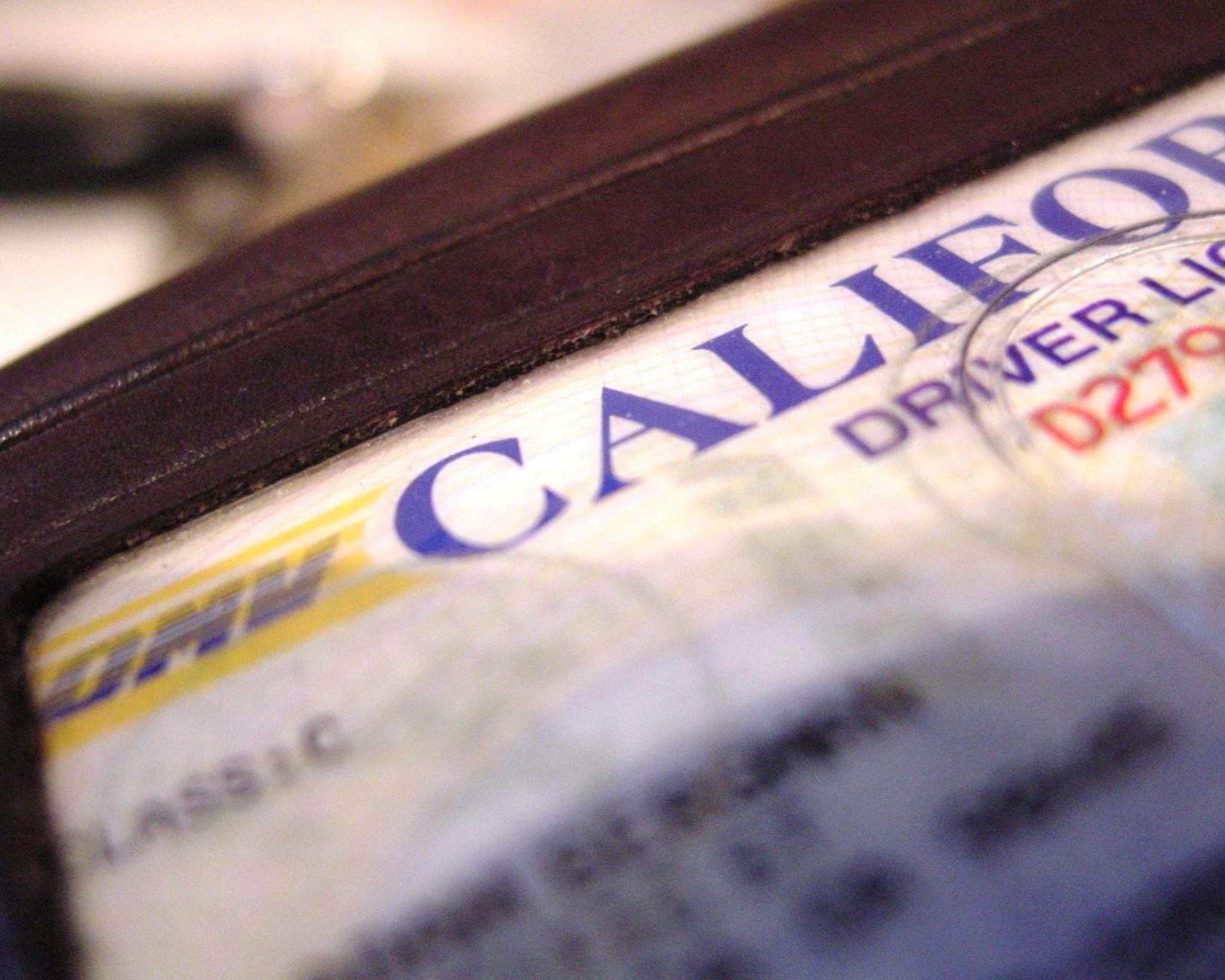 Close up of California driving licence
Close up of California driving licence
1.3 Can I Use Other Forms of ID Instead of a Passport?
Yes, you can use a REAL ID-compliant driver’s license or other government-issued photo ID instead of a passport for travel to Puerto Rico.
Acceptable forms of identification include REAL ID-compliant driver’s licenses, state-issued ID cards, military IDs, and permanent resident cards. These options offer flexibility for travelers who may not have a valid passport or prefer not to carry it. It’s important to note that, starting May 7, 2025, all U.S. travelers must have a REAL ID-compliant driver’s license or another acceptable form of ID to board domestic flights, as stated by the TSA.
1.4 What About Children? Do They Need a Passport?
Children under 18 are not required to present a photo ID when traveling domestically, including to Puerto Rico, but it is recommended to carry a birth certificate for verification purposes.
While children are not mandated to have a photo ID, having a birth certificate can help resolve any questions about identity or age. This is particularly useful for infants or young children. For teenagers, a student ID or other form of identification can also be helpful. The U.S. Department of Homeland Security provides guidance on acceptable travel documents for children, emphasizing the importance of having some form of identification for minors.
2. What Is a Real ID and Why Is It Important for Traveling to Puerto Rico?
A REAL ID is a form of identification that meets federal security standards set by the REAL ID Act of 2005, enhancing the security of state-issued driver’s licenses and ID cards.
REAL ID compliance ensures that your identification is secure and reliable for domestic travel and federal purposes. The REAL ID Act established minimum security standards for state-issued driver’s licenses and ID cards after the 9/11 attacks. These standards aim to prevent fraudulent identification and enhance overall security. As of May 7, 2025, federal agencies, including the TSA, will only accept REAL ID-compliant driver’s licenses and other acceptable forms of ID for domestic air travel, according to the Department of Homeland Security.
2.1 How Do I Obtain a Real ID?
To obtain a REAL ID, visit your state’s Department of Motor Vehicles (DMV) with required documents, including proof of identity, social security number, and two proofs of address.
Each state may have slightly different requirements, so it’s best to check your local DMV’s website for specific instructions. Generally, you’ll need to provide documents such as a birth certificate, social security card, and two documents proving your current address, such as utility bills or bank statements. The DMV will verify these documents and issue a REAL ID-compliant driver’s license or ID card.
2.2 What Documents Are Needed To Get a Real ID?
Generally, you need a birth certificate or passport, social security card, and two documents proving your current address, such as utility bills or bank statements, to get a Real ID.
The specific documents required may vary by state, but these are the most common. A birth certificate or valid U.S. passport serves as proof of identity and legal presence in the United States. Your social security card is needed for verification purposes, and the two proofs of address help ensure that your driver’s license or ID card reflects your current residence. Checking with your state’s DMV ensures you have all necessary documents, as outlined by the REAL ID Act.
2.3 What Happens If My Driver’s License Is Not Real ID Compliant?
If your driver’s license is not REAL ID compliant by May 7, 2025, you will need to use another acceptable form of identification, such as a passport, to fly to Puerto Rico or other destinations within the United States.
After the enforcement date, federal agencies like the TSA will no longer accept non-REAL ID-compliant driver’s licenses for air travel or access to federal facilities. Without a REAL ID or other acceptable form of ID, you may be denied boarding. The TSA provides a list of acceptable identification documents, including passports, permanent resident cards, and military IDs, ensuring you have alternative options for travel.
2.4 Can I Still Travel Internationally With a Real ID?
No, a REAL ID is not a substitute for a passport and cannot be used for international travel.
A REAL ID is designed for domestic use and does not meet the requirements for international travel. To travel to countries outside of the United States and its territories, you will need a valid U.S. passport. The U.S. Department of State provides detailed information on passport requirements for international travel, emphasizing that a REAL ID is only valid for domestic purposes.
3. Flying to Puerto Rico From Another Country: What Do I Need?
If you are a US citizen flying to Puerto Rico from another country, you generally do not need a passport as long as your trip originates in the United States or its territories.
For US citizens, the rules are the same whether you are flying from within the US or returning from another country. However, ensure that your connecting flights do not include layovers in foreign countries, as that would necessitate a passport. The U.S. Customs and Border Protection confirms that U.S. citizens returning directly from U.S. territories do not need a passport.
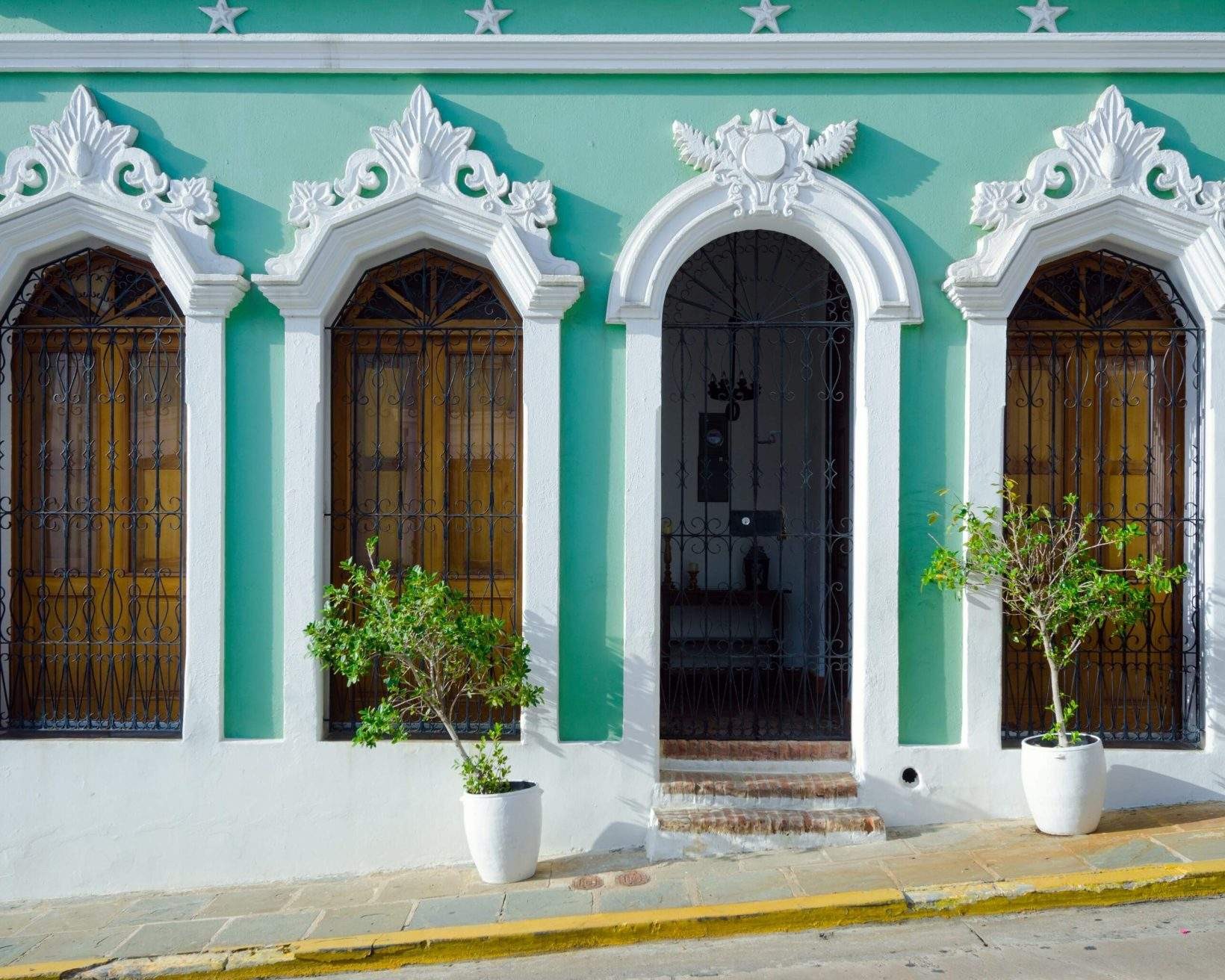 A building with light green exterior walls and white arched mouldings around its windows and doorway.
A building with light green exterior walls and white arched mouldings around its windows and doorway.
3.1 What if I am Not a U.S. Citizen?
Non-U.S. citizens typically need a valid passport and may need a visa to enter Puerto Rico, depending on their country of citizenship and the purpose of their visit.
Visa requirements vary depending on your nationality and the agreements between your country and the United States. The U.S. Department of State provides a comprehensive list of visa requirements for foreign visitors. Non-U.S. citizens should check these requirements well in advance of their trip to ensure they have the necessary documentation.
3.2 Do Lawful Permanent Residents Need a Passport?
Lawful Permanent Residents (LPRs) do not need a passport to travel directly between the United States and Puerto Rico.
LPRs typically need their Green Card (Permanent Resident Card) to travel. This card serves as proof of their legal residency status in the United States. However, if an LPR travels to a foreign country before entering Puerto Rico, they will need to present their passport and any required visas to re-enter the United States or its territories, according to U.S. Customs and Border Protection.
3.3 What Documents Do I Need If I Have a Connecting Flight Through a Foreign Country?
If you have a connecting flight through a foreign country, you will need a valid passport and possibly a visa, even if your final destination is Puerto Rico.
Traveling through a foreign country means you are subject to that country’s entry requirements. A valid passport is almost always required, and a visa may be necessary depending on your nationality and the country you are transiting through. The U.S. Department of State advises travelers to check the entry requirements for all countries on their itinerary to avoid any issues.
4. Can I Travel From Puerto Rico to the U.S. Without a Passport?
Yes, if you are a U.S. citizen or Lawful Permanent Resident (LPR), you do not need a passport to travel from Puerto Rico to the United States.
Traveling from Puerto Rico back to the U.S. is considered domestic travel for U.S. citizens and LPRs. A government-issued photo ID, such as a driver’s license, is sufficient for U.S. citizens. LPRs should carry their Green Card. However, if you travel to a foreign country before returning to the U.S., you will need a passport, as confirmed by U.S. Customs and Border Protection.
4.1 What Happens If I Visit Another Country Before Returning to the U.S.?
If you visit another country before returning to the U.S., you will need a valid passport to re-enter the United States, regardless of whether you initially traveled to Puerto Rico.
A visit to a foreign country triggers international travel requirements. Even if your trip started and was intended to end within U.S. territories, touching foreign soil necessitates a passport. The U.S. Department of State emphasizes that all travelers entering the United States from a foreign country must have a valid passport or other acceptable travel document.
4.2 Are There Any Exceptions for Emergency Travel?
In emergency situations, U.S. citizens may be able to enter the U.S. without a passport, but this is subject to the discretion of U.S. Customs and Border Protection (CBP) officers.
Emergency travel exceptions are rare and typically require significant documentation to prove the emergency and your identity. CBP officers have the authority to make exceptions on a case-by-case basis. It’s always best to have a valid passport, but in dire situations, CBP may consider alternative forms of identification and proof of citizenship.
5. What To Bring To Puerto Rico: Essential Items for Your Trip
Besides the necessary identification, remember to pack essentials such as sunscreen, appropriate clothing, and any necessary medications for your trip to Puerto Rico.
Puerto Rico enjoys a tropical climate, so lightweight and breathable clothing is ideal. Don’t forget essentials like sunscreen, sunglasses, and a hat to protect yourself from the sun. Comfortable walking shoes are a must for exploring the island’s attractions. According to travel experts, packing smart can greatly enhance your travel experience.
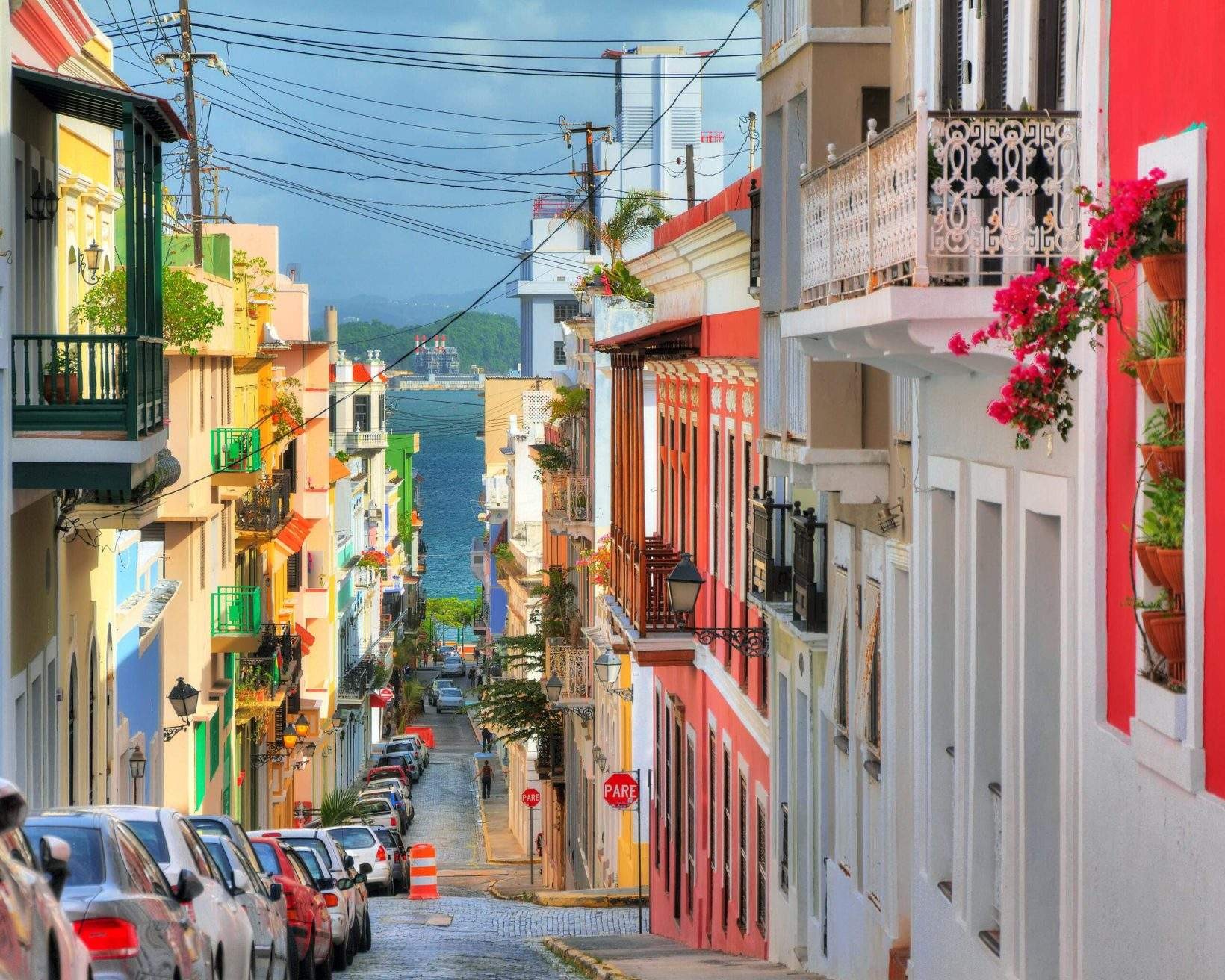 A narrow street with parked vehicles on one side flanked by colourful buildings.
A narrow street with parked vehicles on one side flanked by colourful buildings.
5.1 What Kind of Clothing Should I Pack?
Pack lightweight, breathable clothing suitable for a tropical climate, including swimwear, casual wear, and comfortable walking shoes.
Light cotton, linen, and moisture-wicking fabrics are excellent choices for staying comfortable in Puerto Rico’s warm weather. Swimwear is essential for enjoying the beaches and water activities. Comfortable walking shoes will be useful for exploring Old San Juan and other attractions. Travel blogs often recommend packing versatile items that can be mixed and matched to save space.
5.2 Are There Any Specific Items I Should Bring for Activities?
Bring items specific to your planned activities, such as hiking shoes for exploring El Yunque National Forest, snorkeling gear for underwater adventures, or formal wear for upscale dining.
If you plan to hike in El Yunque, sturdy hiking shoes are a must. Snorkeling gear allows you to explore the vibrant marine life. For dining in upscale restaurants or attending special events, pack appropriate formal wear. Travel guides emphasize the importance of tailoring your packing list to your planned activities.
5.3 What Toiletries and Personal Care Items Should I Include?
Include sunscreen, insect repellent, after-sun lotion, and any personal medications you require.
Sunscreen with a high SPF is essential for protecting your skin from the strong Caribbean sun. Insect repellent will help ward off mosquitoes, especially in forested areas. After-sun lotion can soothe your skin after a day at the beach. Ensure you have an adequate supply of any personal medications, along with copies of your prescriptions. According to health and travel advisories, being prepared with these items can prevent discomfort and health issues during your trip.
5.4 Should I Bring Cash?
While credit cards are widely accepted, it’s a good idea to bring some cash for smaller establishments, markets, and tipping.
Having cash on hand is useful for situations where credit cards may not be accepted, such as at local markets, small restaurants, and for tipping service staff. U.S. dollars are the official currency of Puerto Rico, so there’s no need to exchange currency. Travel experts recommend carrying a mix of cash and credit cards for maximum convenience.
6. Top Travel Tips To Enjoy Your Visit To Puerto Rico
To make the most of your trip to Puerto Rico, plan your itinerary in advance, be aware of local customs, and take necessary safety precautions.
Planning your itinerary helps you prioritize the attractions and activities that interest you most. Respecting local customs, such as dressing modestly when visiting religious sites, enhances your cultural experience. Taking safety precautions, such as being aware of your surroundings and avoiding unsafe areas, ensures a secure and enjoyable trip. Travel guides often highlight these tips to help travelers have a rewarding experience.
 A man skillfully surfs on the wavy beach by the lush island.
A man skillfully surfs on the wavy beach by the lush island.
6.1 What Are the Best Ways To Get Around Puerto Rico?
The best ways to get around Puerto Rico include renting a car, using taxis, and utilizing public transportation options, depending on your budget and itinerary.
Renting a car offers the most flexibility for exploring the island at your own pace. Taxis are readily available in urban areas and tourist zones. Public transportation, such as buses, is an affordable option for getting around San Juan. Travel blogs recommend researching transportation options in advance to find the best fit for your needs.
6.2 What Are Some Must-See Attractions in Puerto Rico?
Must-see attractions in Puerto Rico include Old San Juan, El Yunque National Forest, the bioluminescent bays, and the beaches of Isla Verde.
Old San Juan offers a glimpse into the island’s rich history with its cobblestone streets and historic forts. El Yunque National Forest is the only tropical rainforest in the U.S. National Forest System. The bioluminescent bays provide a magical experience with their glowing waters. Isla Verde boasts beautiful beaches and vibrant nightlife. According to tourism websites, these attractions showcase the diverse beauty of Puerto Rico.
6.3 What Local Customs Should I Be Aware Of?
Be aware of local customs such as greeting people with a handshake or nod, dressing modestly when visiting religious sites, and respecting the local pace of life.
Greeting people with a friendly handshake or nod is a common courtesy. Dressing modestly when visiting churches and other religious sites shows respect for local traditions. The pace of life in Puerto Rico is generally more relaxed, so be patient and embrace the laid-back atmosphere. Travel etiquette guides emphasize the importance of being culturally sensitive to enhance your travel experience.
6.4 How Can I Stay Safe During My Trip?
Stay safe by being aware of your surroundings, avoiding unsafe areas, keeping valuables secure, and following local advisories.
Being aware of your surroundings and avoiding poorly lit or isolated areas can help prevent petty theft and other crimes. Keep your valuables secure and out of sight. Follow local advisories and warnings about weather conditions or potential hazards. According to safety and travel advisories, these precautions can help ensure a safe and enjoyable trip.
7. What Are The Best Places To Stay in Puerto Rico?
The best places to stay in Puerto Rico range from vibrant hotels in San Juan to tranquil resorts in Isla Verde, depending on your preferences and budget.
San Juan offers a mix of historic charm and modern amenities, with hotels ranging from boutique accommodations to luxury resorts. Isla Verde is known for its beautiful beaches and upscale hotels. Other popular areas include Condado and Dorado. Travel guides often highlight these areas for their diverse lodging options and convenient access to attractions.
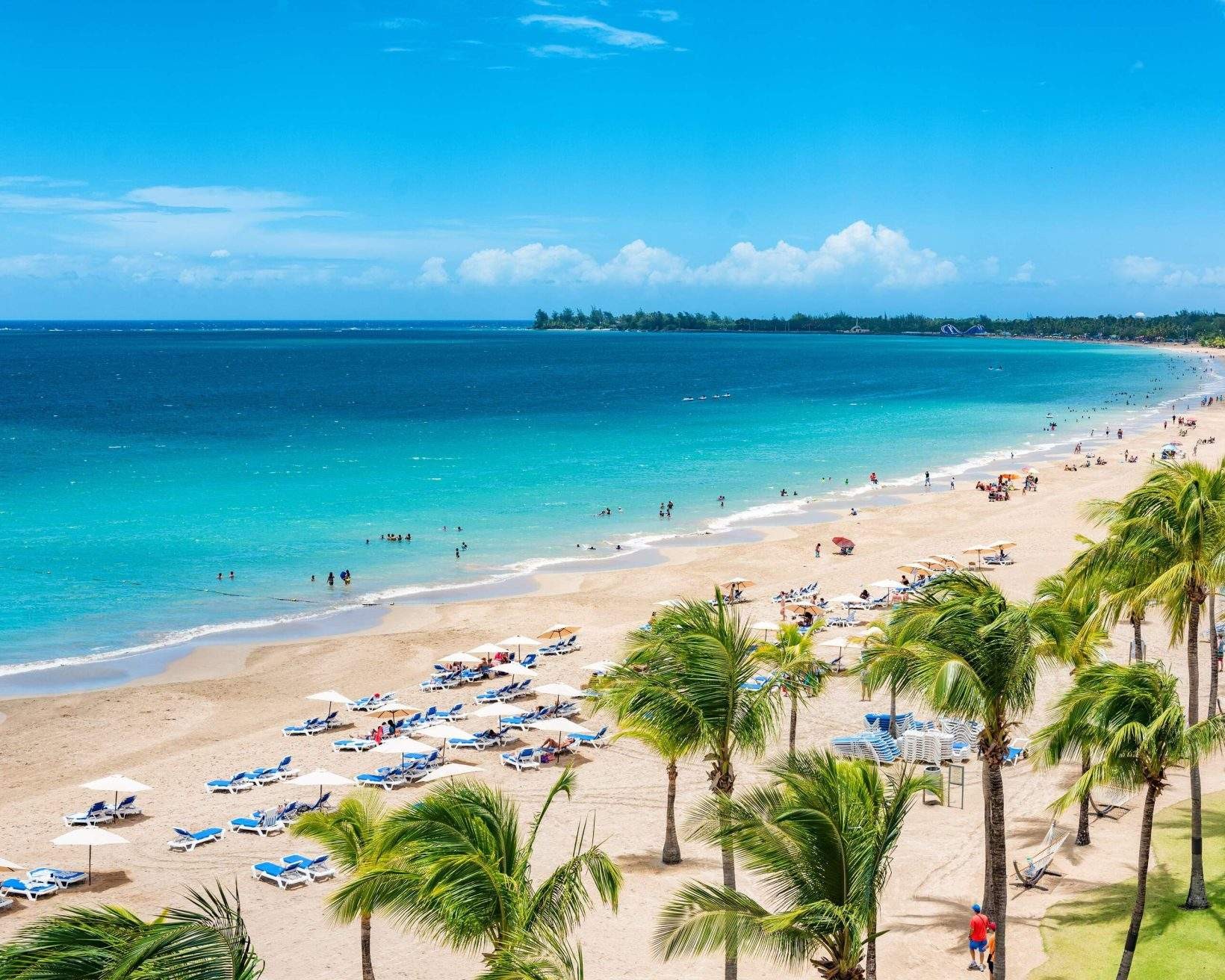 A coconut-tree lined beach equipped with umbrellas and loungers perfect for watching the waves crash on the shore.
A coconut-tree lined beach equipped with umbrellas and loungers perfect for watching the waves crash on the shore.
7.1 What Type of Accommodations Are Available?
Accommodations in Puerto Rico include hotels, resorts, guesthouses, and vacation rentals, offering options for every type of traveler.
Hotels and resorts provide a range of amenities, such as swimming pools, restaurants, and concierge services. Guesthouses offer a more intimate and personalized experience. Vacation rentals, such as apartments and villas, are ideal for families or groups seeking more space and privacy. According to accommodation websites, these options cater to diverse preferences and budgets.
7.2 Which Areas Are Best for Families?
Areas best for families include Isla Verde, Dorado, and Palmas del Mar, known for their family-friendly resorts and activities.
Isla Verde offers calm beaches and a variety of water sports suitable for children. Dorado features luxury resorts with kids’ clubs and family-oriented amenities. Palmas del Mar provides a gated community with access to golf courses, tennis courts, and a marina. Travel blogs often recommend these areas for their safety and abundance of family-friendly activities.
7.3 What Are Some Budget-Friendly Options?
Budget-friendly options include guesthouses, hostels, and vacation rentals in areas like Old San Juan and smaller towns outside the main tourist zones.
Guesthouses and hostels offer affordable accommodations with basic amenities. Vacation rentals can be a cost-effective option for groups. Staying in smaller towns outside the main tourist zones can also save money on lodging and dining. According to budget travel websites, these options allow you to experience Puerto Rico without breaking the bank.
7.4 Where Can I Find Luxury Accommodations?
Luxury accommodations can be found in areas like Condado, Dorado, and Isla Verde, featuring upscale hotels and resorts with premium amenities.
Condado boasts stylish hotels with ocean views and gourmet dining options. Dorado is home to luxury resorts with world-class spas and golf courses. Isla Verde offers upscale hotels with beachfront access and exclusive services. Travel guides often highlight these areas for their opulent accommodations and high-end experiences.
8. Food and Drink: What To Try in Puerto Rico
When visiting Puerto Rico, be sure to try local dishes such as mofongo, tostones, and lechón, and sample local drinks like piña coladas and Puerto Rican rum.
Mofongo, made from mashed plantains, is a staple of Puerto Rican cuisine. Tostones, or fried plantains, are a popular side dish. Lechón, or roasted pig, is a traditional holiday delicacy. Piña coladas originated in Puerto Rico and are a must-try. Puerto Rican rum is renowned worldwide and is used in many local cocktails. Culinary travel guides recommend these dishes and drinks for an authentic taste of Puerto Rico.
 FOOD_PUERTORICAN_PORTORICAN_PUERTO-RICO_MOFONGO
FOOD_PUERTORICAN_PORTORICAN_PUERTO-RICO_MOFONGO
8.1 What Are Some Popular Local Dishes?
Popular local dishes include mofongo, tostones, lechón, arroz con gandules, and pasteles.
Mofongo is made from mashed plantains and often filled with meat or seafood. Tostones are twice-fried plantains served as a side dish. Lechón is roasted pig, typically prepared for special occasions. Arroz con gandules is rice with pigeon peas, a flavorful and common side dish. Pasteles are similar to tamales, made with plantain dough and filled with meat. According to culinary experts, these dishes represent the rich culinary heritage of Puerto Rico.
8.2 What Are Some Traditional Drinks To Sample?
Traditional drinks to sample include piña coladas, Puerto Rican rum, maví, and coquito.
Piña coladas were invented in Puerto Rico and are a refreshing blend of rum, coconut cream, and pineapple juice. Puerto Rican rum is used in a variety of cocktails and is also enjoyed neat. Maví is a fermented drink made from the bark of the maví tree. Coquito is a creamy coconut-based drink similar to eggnog, typically enjoyed during the holidays. Beverage guides recommend these drinks for an authentic taste of Puerto Rican culture.
8.3 Where Can I Find Authentic Puerto Rican Cuisine?
Authentic Puerto Rican cuisine can be found in local restaurants, food markets, and family-owned establishments throughout the island.
Local restaurants, or “comedores,” offer traditional dishes at affordable prices. Food markets, such as the Mercado de Santurce in San Juan, provide a variety of local specialties. Family-owned establishments often serve homemade recipes passed down through generations. Travel blogs recommend exploring these venues for an authentic culinary experience.
8.4 Are There Any Food Tours Available?
Yes, there are food tours available in cities like San Juan that offer a guided culinary experience of Puerto Rican cuisine.
Food tours provide an opportunity to sample a variety of local dishes while learning about the culinary history and traditions of Puerto Rico. These tours often include visits to local restaurants, food markets, and specialty shops. Tour operators offer a range of options to suit different tastes and interests.
9. Activities and Attractions: What To See And Do In Puerto Rico
Puerto Rico offers a wealth of activities and attractions, including exploring historic Old San Juan, hiking in El Yunque National Forest, and relaxing on the beaches of Vieques.
Old San Juan is a UNESCO World Heritage Site with cobblestone streets, colorful buildings, and historic forts. El Yunque National Forest is the only tropical rainforest in the U.S. National Forest System. Vieques is known for its pristine beaches and bioluminescent Mosquito Bay. Travel guides highlight these destinations as must-see attractions in Puerto Rico.
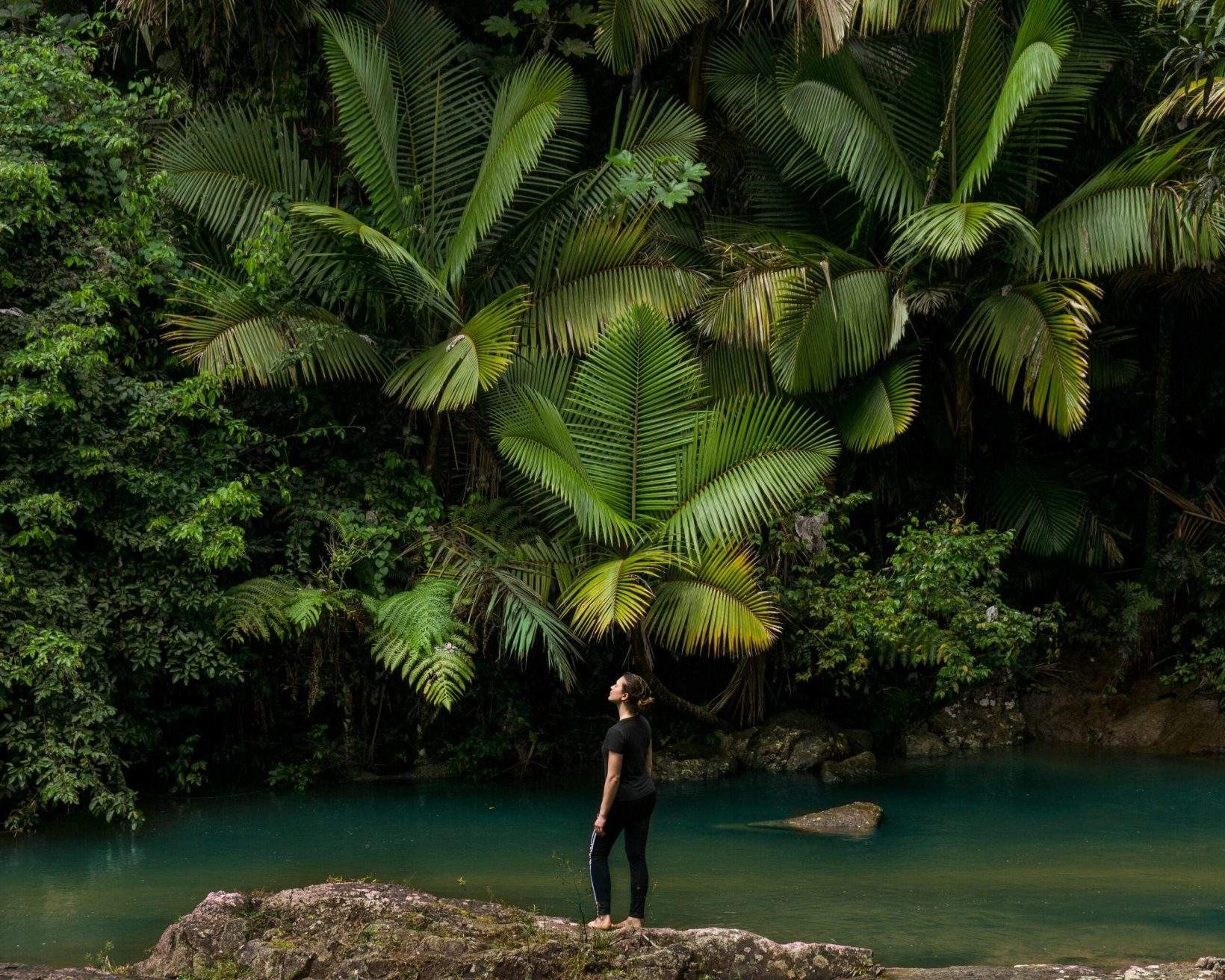 Puerto Rico, El Yunque National Forest
Puerto Rico, El Yunque National Forest
9.1 What Are Some Historical Sites To Visit?
Historical sites to visit include Castillo San Felipe del Morro, Castillo San Cristobal, and the historic streets of Old San Juan.
Castillo San Felipe del Morro, also known as El Morro, is a 16th-century fortress overlooking the San Juan Bay. Castillo San Cristobal is another impressive fortress that defended San Juan from land attacks. The historic streets of Old San Juan are lined with colonial architecture and offer a glimpse into the island’s past. According to historical resources, these sites are essential for understanding Puerto Rico’s rich history.
9.2 What Outdoor Activities Are Available?
Outdoor activities include hiking in El Yunque National Forest, swimming and snorkeling in the bioluminescent bays, and surfing on the beaches of Rincon.
Hiking in El Yunque offers the opportunity to explore lush rainforests and waterfalls. Swimming and snorkeling in the bioluminescent bays provide a magical experience. Rincon is known for its world-class surfing waves. Adventure travel guides recommend these activities for experiencing the natural beauty of Puerto Rico.
9.3 What Cultural Experiences Can I Enjoy?
Cultural experiences include visiting the Museo de Arte de Puerto Rico, attending local festivals, and exploring the Afro-Caribbean neighborhood of Piñones.
The Museo de Arte de Puerto Rico showcases the island’s artistic heritage. Local festivals offer the opportunity to experience traditional music, dance, and cuisine. Piñones is a coastal neighborhood known for its vibrant Afro-Caribbean culture and cuisine. Cultural tourism websites highlight these experiences for immersing yourself in Puerto Rican culture.
9.4 What Are Some Unique Attractions To Explore?
Unique attractions to explore include the Arecibo Observatory, the Camuy River Cave Park, and the coffee plantations in the mountains.
The Arecibo Observatory, though no longer operational, was once the world’s largest radio telescope. The Camuy River Cave Park features an extensive network of underground caves and rivers. The coffee plantations in the mountains offer tours and tastings of locally grown coffee. Tourism websites recommend these attractions for a unique and memorable experience.
10. Frequently Asked Questions (FAQs) About Traveling to Puerto Rico
Here are some frequently asked questions about traveling to Puerto Rico, including passport requirements, currency, and safety tips.
10.1 Do I Need a Passport to Travel to Puerto Rico?
No, U.S. citizens do not need a passport to travel to Puerto Rico. A government-issued photo ID, such as a driver’s license, is sufficient.
10.2 What Currency Is Used in Puerto Rico?
The currency used in Puerto Rico is the U.S. dollar (USD).
10.3 Is It Safe To Travel to Puerto Rico?
Yes, it is generally safe to travel to Puerto Rico, but it’s important to be aware of your surroundings and take necessary precautions.
10.4 What Language Is Spoken in Puerto Rico?
The official languages of Puerto Rico are Spanish and English.
10.5 What Is the Best Time To Visit Puerto Rico?
The best time to visit Puerto Rico is typically from mid-April to June, when the weather is pleasant and the crowds are smaller.
10.6 Do I Need To Exchange Currency Before Traveling to Puerto Rico?
No, you do not need to exchange currency, as Puerto Rico uses the U.S. dollar.
10.7 What Should I Pack for a Trip to Puerto Rico?
You should pack lightweight clothing, swimwear, sunscreen, insect repellent, and comfortable walking shoes.
10.8 Are There Any Health Precautions I Should Take?
You should consult your doctor about any necessary vaccinations and take precautions against mosquito bites, as Puerto Rico is a Zika-prone area.
10.9 Can I Use My Cell Phone in Puerto Rico?
Yes, you can use your cell phone in Puerto Rico, but check with your provider about international roaming charges.
10.10 Are Credit Cards Widely Accepted in Puerto Rico?
Yes, credit cards are widely accepted in Puerto Rico, but it’s a good idea to have some cash on hand for smaller establishments and markets.
Bottom Line
Traveling to Puerto Rico is a breeze for U.S. citizens! With just your driver’s license or other government-issued photo ID, you can explore this Caribbean paradise without the hassle of a passport. From the historic streets of Old San Juan to the lush rainforest of El Yunque, Puerto Rico offers a diverse range of experiences.
Ready to plan your stress-free getaway? SIXT.VN offers convenient travel services to make your trip seamless. Need a ride from the airport? We’ve got you covered with reliable airport transfer services. Looking for the perfect hotel? We can help you find accommodations that fit your budget and preferences. And if you want to explore the island with ease, our tour packages are designed to showcase the best of Puerto Rico.
Visit SIXT.VN today to book your airport transfer, hotel, or tour and start your unforgettable adventure!
Address: 260 Cau Giay, Hanoi, Vietnam
Hotline/Whatsapp: +84 986 244 358
Website: SIXT.VN



